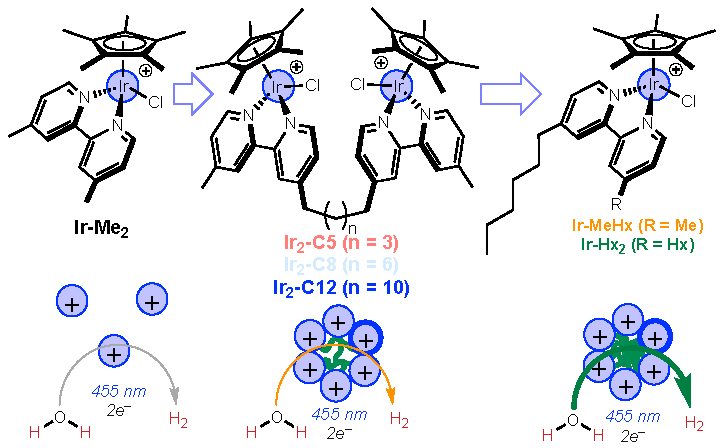According to a study published in Nature Chemistry, a group of chemistry researchers at the University of North Carolina in Chapel Hill have devised a novel method for utilizing the sun’s energy to create hydrogen gas, a possible renewable energy source, from water.

Image Credit: The University of North Carolina
The study, titled “Catalyst Self-Assembly Accelerates Bimetallic Light-driven Electrocatalytic H2 Evolution in Water,” led by UNC-Chapel Hill chemist Alexander Miller, examines a mechanism that splits water into its component elements—hydrogen and oxygen—using light and electricity.
What we found is you can induce these catalysts to self-assemble into these globules, which become better at absorbing light and at making the chemical bonds to produce hydrogen. This research represents a significant contribution to the field of catalysis and paves the way for the development of efficient and sustainable energy technologies.
Alexander Miller, Professor, Department of Chemistry, University of North Carolina at Chapel Hill
Miller, a chemistry professor in the College of Arts and Sciences, was accompanied by Marc ter Horst, research professor of the nuclear magnetic resonance core laboratory; Isaac Cloward, a graduate research assistant; Tamara Jurado, a postdoctoral research associate; Tianfei Liu, a postdoctoral research associate; and Annabell Bonn, Matthew Chambers, and Catherine Pitman, all former members of Miller’s lab.
The researchers observed that molecular structures caused catalysts—molecules that speed up a chemical reaction without being consumed in the process—to clump together to form micelles, which are globules resembling oily deposits on the surface of the water when olive oil is added.
A crucial step in the development of renewable energy technology is water splitting, which is especially important for producing hydrogen, a sustainable and clean fuel. The only result of hydrogen extraction from water is water vapor, which can be utilized in fuel cells, combustion engines, and other uses.
Miller added, “Water-splitting has the potential to store solar energy in the form of chemical bonds, addressing the intermittent nature of solar power generation. Research into efficient and cost-effective water-splitting methods is a significant area of interest in the field of renewable energy and sustainable development.”
Additionally, the researchers employed a unique method known as dynamic light scattering, sometimes called photon correlation spectroscopy, to gauge the catalysts' sizes by examining variations in the intensity of scattered light. This non-invasive method yielded useful data on the catalysts’ dimensions, shapes, and distribution.
Larger micelles created hydrogen more quickly. They also utilized an analytical technology known as nuclear magnetic resonance spectroscopy to determine that the catalysts were close together within the particles.
Miller concluded, “We want to capture the energy in sunlight and instead of turning it into electricity, like a solar panel on your roof, we want to generate a fuel that we can store and use on demand for driving a car, charging a battery, running lights. That is the big picture.”
Journal Reference:
Cloward, I. N., et. al. (2024) Catalyst self-assembly accelerates bimetallic light-driven electrocatalytic H2 evolution in water. Nature Chemistry. doi:10.1038/s41557-024-01483-3